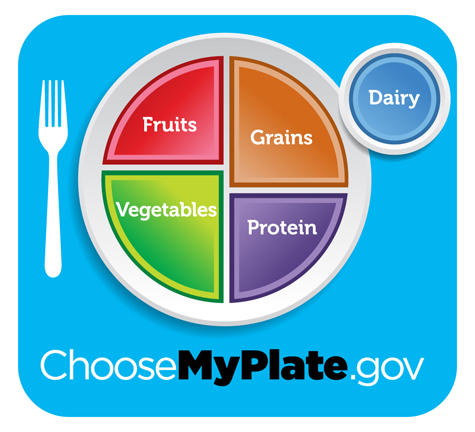USDA scraps food pyramid for a plate
New nutrition icon is easier for busy families to digest, first lady and Agriculture chief say.

USDA
Move over, food pyramid. The Agriculture Department has introduced a new, simpler aid to help families figure out what to put on their plates. And it's... a plate.
The agency, in conjunction with first lady Michelle Obama's "Let's Move" campaign, has released the MyPlate icon to show families how a healthy meal should be broken down. Fruits and vegetables make up half of the plate; the other half is grain and protein, and there is also a side of low-fat dairy.
"For many years we used MyPyramid to help people make better choices. The reality is it's a complex figure," USDA Secretary Tom Vilsack said in a statement on Thursday. "It is simply too complex to serve as a quick and easy guide. What we have today is a simple visual, research-based icon that sends a clear, unmistakable message."
The department decided to revamp the nutrition suggestion icon following a report from the Childhood Obesity Task Force suggesting that simple advice is best for consumers. The Food Pyramid was redesigned in 2005, but many critics found its vertical stripes even more confusing than the original block-on-block style.
The new icon is supposed to help consumers follow the new guidelines for healthy eating that the USDA released earlier this year.
"When mom or dad comes home from a long day of work, we're already asked to be a chef, a referee, a cleaning crew. So it's tough to be a nutritionist, too," Michelle Obama said in a statement on Thursday. "But we do have time to take a look at our kids' plates. As long as they're half full of fruits and vegetables and paired with lean proteins, whole grains and low-fat diary, we're golden."
Both Vilsack and the first lady acknowledged that making sure all families have access to fresh produce is a difficult task.
In May, the USDA launched the Food Desert Locator, which provides data on neighborhoods with limited access to affordable fresh food. The tool is designed to help efforts to expand the availability of food in low-income communities.
Consumers unsure of how to actually get their families to eat a plate full of vegetables, whole grain, and lean protein can find recipes and other resources on the MyPlate website . The food pyramid will still be available for consumers to reference.


